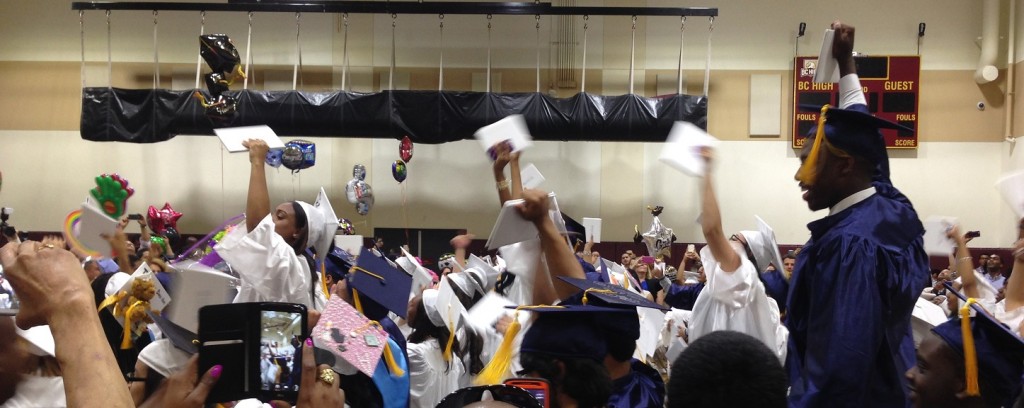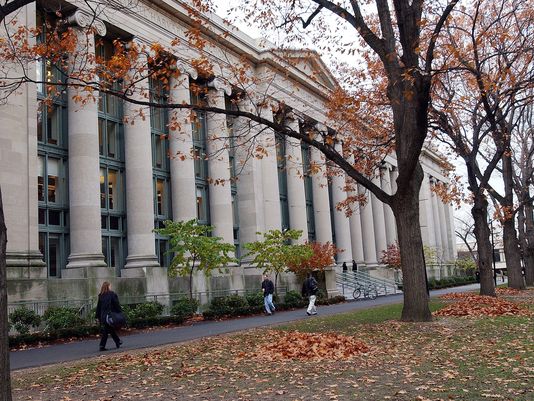In the final ‘shaping’ of an incoming class, academic standards give way to other, more ambiguous factors
Last year, when high-school seniors applied to college, they never could have imagined the mess that a global pandemic would create for their first semester. But for students at the nation’s best-known and most selective institutions, they also will never know just how close they may have come to not getting in at all.
The admissions process at such schools is shrouded in secrecy and surrounded by confusion. From the outside, how top-ranked schools rate applicants seems precise enough to land someone on the moon. When you’re a high-school senior (or the parent of one), it feels like another 10 points on the SAT or one extra AP course can tip the scales. What I found, however, by spending the 2018-19 academic year embedded in the admissions offices at Davidson College, Emory University and the University of Washington, and by interviewing dozens of admissions officers at other schools, is that everything is much more ambiguous.
The lack of simple standards was most pronounced when I watched admissions officers complete their “shaping” of the class, the last sorting of applicants before final decisions are sent out in the spring. Shaping is a step at the very end of the process that most teenagers and their parents are unaware of. It’s where selective admissions is the most unfair—the point at which a decision based on traditional criteria such as grades and test scores gives way to one based partly on other factors, such as money, race, gender and major.
The year I was inside Emory University’s admissions office, the school received a record 30,000 applications for fewer than 1,400 spots in its incoming class. In early March, just weeks before official notices were scheduled to go out, the statistical models used by Emory to predict enrollment indicated that too many applicants had been chosen to receive acceptances. In the span of days, teams of admissions officers covering five geographical areas had to shift 1,000 applications from the thin “admit” stack to the much larger “deny” or “wait list” piles.
Emory is located in Atlanta, and the committee for the Southeast region had to cut the most applicants, 242. The admissions officers didn’t spend much time talking about any one student. Their goal wasn’t to readjudicate an applicant’s entire file but to see the potential admit through the wider lens of a nearly finished class. They moved one young man to “deny” after looking at his senior-year grades—lots of Bs—noting that they had already rejected four other academically stronger students from his high school. They switched a legacy applicant—meaning that a parent had earned a degree from Emory—to “deny” because of his light extracurricular involvement. The original readers gave him a score of 2 out of 5 in that category, observing that he wanted to major in pre-med “but we don’t see activities to support that,” one of the admissions officers said.
Partway through the meeting, the group landed on a file that had multiple “tags.” The applicant was both a legacy and a child of an Emory employee. Because Emory employees receive tuition benefits for their children, moving an applicant from “accept” to “deny” would have come at a steep cost for a family with a child so close to getting admitted. The applicant had strong grades with a rigorous curriculum, but the overall file was described as “lackluster” by the original reader, with ratings of 2 out of 5 for both recommendations and a catchall category called intellectual curiosity. “I’m sure there is plenty of goodness in the file,” said Will Segura, the admissions officer who oversaw the regional committee, “but in terms of natural sciences and what we’re looking at, I don’t believe this is that student.”
Someone else in the room pulled up the applicant’s midyear grades. They were all As. But while the student listed neuroscience as a major, “there is no example of neuro in the file” in terms of activities or in the essays, the admissions officer said. She suggested that they move the applicant to the wait list, which would be “a softer landing” than an outright denial. The applicant was from a high school that sent many students to Emory, but on a ranked list of applicants from the school that filled a page and a half, this applicant was near the bottom of the first page.
A vote was called, a rare occurrence on a day when the committee agreed on most applications. Mr. Segura wanted to shift the student from “accept” to “deny,” while another admissions officer preferred the wait list. Their third colleague hedged. The committee was reminded that the application would come back around for another review the following week because of the multiple tags. “From the perspective we’re supposed to be coming at now,” the wavering staff member said, “it’s a deny.”
The three admissions officers had debated the file for 12 minutes. It would be their longest deliberation about any applicant that morning. The following week, the student landed back in the admit pile after a review of hundreds of files with special tags, and the week after that, he received an official acceptance to Emory University. The high-school senior never knew how close he had come to a rejection and how much the college’s priorities—in this case, for children of employees rather than for any particular aspect of his academic or personal life—played a role in getting him over the finish line.
The shaping process, like competitive admissions overall, is particularly tough on qualified women. Men represent less than 45% of students at American colleges, and schools pay attention to gender balance. Among the tentative admits changed by the committee for the Northeast region was a girl with an A average and 1500 on the SAT who wanted to major in prelaw. She ran track in middle school and made the varsity soccer team as a sophomore. One admissions officer found the recommendations lacking because they focused on her personal qualities instead of what happened in the classroom. “I like her, if we have room,” someone said. “Well, we don’t,” said another.
The shaping process Emory employed while I was there is replicated in slightly different ways at other selective colleges each spring. Think of it as finalizing the invite list for a wedding: Guests are moved on and off the list based on whether you think they’ll show up, or whether the groom’s family has too many invites compared with the bride’s. Admissions officers ask questions about their invite lists, too. Do we have enough Black students or Latino students? Enough students who can pay the bulk of the tuition bill? Too many women in the class? Too many students from the Southwest or Northeast? Enough humanities majors?
By this stage, the applicant pool has been reduced to students who could flourish at the school or, for that matter, at many others. These final decisions depend on what the class looks like and how much it will cost to admit the students in the “accepted” bin. This is also the moment when an applicant’s background can help to push them over the line to an acceptance. Legacies, children of faculty and staff, and applicants under the watchful eye of a college’s president or fundraising office usually receive their biggest boost at this point.
The way that admissions officers initially review applications differs by college, and so does the shaping process. Public universities with huge applicant pools and large numbers of incoming students typically use an ax, while smaller private colleges use a scalpel. The University of Washington employs a team of readers to individually review 45,000 applications for fewer than 7,000 spots, and like other selective institutions, its shaping process is less personal and more mechanistic. Applicants are separated into clusters according to the scores they were assigned by admissions readers. Each cluster has hundreds of applicants with the same set of scores.
The most significant decision the university’s admissions director makes each year is where to draw the line among those clusters. The cutoff depends on a variety of factors, but it’s primarily determined by the number of applications and the strength of the overall pool. The point is also different for Washington residents, out-of-state applicants and international students. Majors are also taken into account for applicants in computer science and engineering, where seats are limited.
At Davidson College in North Carolina, with an incoming class of just over 500, the full 16-person admissions committee comes together for a week in early March to evaluate applicants flagged by the admissions dean, Chris Gruber. Each day, the committee focuses on a different batch of applicants: artists and musicians, deferrals from early decision, legacies and children of faculty. This is where racial and ethnic diversity comes into play. Throughout the process, Mr. Gruber has a sense of the geographic diversity of the applicant pool, because admissions officers review by region, but he gets the clearest picture of how acceptances break down by race, ethnicity and gender at this point. Mr. Gruber uses the shaping process to “self-correct” and ensure that enrollments for various demographic groups are at least on par with previous years.
With a tsunami of applicants who are qualified on the surface, what matters at this point are the elements that differentiate students and the chances that they will ultimately choose Davidson—what admissions officers call LTE, likelihood to enroll. The more these admissions officers dissect an applicant’s intentions now, the better Davidson will fare in April, when students have to decide among the many schools that accept them. It’s another way that a college’s agenda—in this case, boosting its yield rate, the share of admitted students who choose to enroll—shapes admissions decisions.
When an application came up from a high school that hadn’t had a student apply to Davidson in four years, an admissions officer asked what was motivating this particular applicant. The committee often turns to the “Why Davidson?” essay to look for clues. In this case, the essay was boilerplate language about Davidson that can be found in any guidebook. The senior was already in the deny pile. He remained there. So did two applicants whose parents worked at other universities and never visited Davidson, on the assumption that they’d probably attend college where their parents worked. Another denial was a senior who wrote about his aspiration to attend the same school as Steph Curry, the NBA superstar who played for Davidson. “It leaves something to be desired,” someone said.
Davidson and Emory are among a few dozen schools with big endowments that don’t consider an applicant’s finances in making decisions, and that promise to give students the money they need to enroll. But the vast majority of colleges take an applicant’s finances into account at some point, either by accepting them and then shorting them on aid—offering them less than expected according to a federal formula—or simply by denying them admission.
Lafayette College in Pennsylvania was one of the few schools willing to show me how they make financial aid trade-offs in shaping a class. “We have to craft a class with talent and diversity,” Matt Hyde, Lafayette’s dean of admissions, told me, “but I also need to deliver a solvent one.”
In the middle of February, a student’s ability to pay begins to enter the admissions equation. From that moment until decisions are delivered near the end of March, Lafayette takes a much closer look at students with high financial need, a line that is recalibrated every year. In 2019, the line was drawn at $35,000, around half of the total cost of attending Lafayette for a year. To give you a sense of the task facing Lafayette’s admissions officers, consider this: Of Lafayette’s 8,500 U.S. applicants in 2018-19, about 2,200 needed more than $35,000 a year in financial aid. That was roughly the level of need for a family with two children and an annual income of up to $175,000.
As he eliminates students from the admit pool, Mr. Hyde is careful to choose applicants with varying levels of financial need. His models tell him that students who get huge financial-aid packages end up enrolling more often than those with smaller awards or no aid at all. It’s a balancing act in meeting enrollment and budget targets.
Among those who didn’t make it into Lafayette that year was an applicant from Pennsylvania who ranked fifth in his high school class of more than 600, with a 3.96 GPA and 1450 on the SAT. His financial need to attend Lafayette: $66,810 for his freshman year. Another student kept out of the admit pool was a girl from the West Coast with nine AP classes on her transcript and a 1430 on the SAT. Her financial need: $57,000. In the end, Lafayette rejected 200 students whom the admissions staff had tentatively accepted but then decided the school couldn’t afford.
The days and weeks that selective colleges spend shaping their class are tense and hectic, as applicants on either side of the line are pushed and pulled between “admit” and “deny.” There’s not one decision but many. “Students see admissions as a report card on their life until now,” Mr. Gruber at Davidson told me, “but there are so many attributes that we’re looking at in the end to build a community.”
But let’s not kid ourselves about the level of precision in crafting a class at an elite college. In reality, the schools aren’t choosing a class as much as they are sending out invitations to join a class. At many selective colleges, only a third of applicants accept an offer—and despite sophisticated models, admissions deans don’t know which third it will be. Every year, some 350 students even turn down an acceptance from Harvard.
In the end, it’s unclear if an incoming class would be much different if admissions officers worried less about shaping it. The simple fact is that the freshman class at any top-ranked college is eerily similar to those at other highly selective schools. Most applicants will never know how close they came to either the admit or the deny pile. At some point, many qualified students were probably in both.
This essay is adapted from Mr. Selingo’s new book, “Who Gets In and Why: A Year Inside College Admissions,” which will be published by Scribner on Sept. 15. He is the former editor of the Chronicle of Higher Education and a special adviser and professor of practice at Arizona State University.


